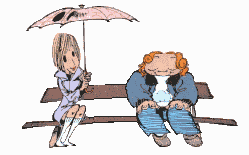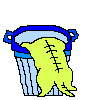| ESE504 : The Class : Adolescence : Observations | |||||
|
Gustav Klimt |
Observations - Adolescent |
To complete this assignment successfully, you should:
- Observe, using the PEPSI charts or other observation tools that will increase your understanding of youth and adolescent behavior patterns.
- Fill in your Name and Email address.
- Send the Observations.
Observations of Adolescents

French Cartoonist, Andre Franquin
The essence of increasing our understanding of human nature and working more effectively with youngsters is tied into our ability to observe. Observing includes more than what we behold. What we choose to attend to, what we give meaning to, and how we frame our perceptions provide context for our observations. We provide personal meaning as well, through our social and affective filter, things like our mood, social constructs, expectations and level of well being and development. Here is an example:
-
A teen is crying
![]() I feel
remorse, for she is sobbing an apology.
I feel
remorse, for she is sobbing an apology.
![]() I feel
panicky for everyone in the room looks over at us.
I feel
panicky for everyone in the room looks over at us.
![]() I feel
anger, for a youngster from another peer group is attacking her.
I feel
anger, for a youngster from another peer group is attacking her.
![]() I try to
ignore the whole thing, since its graduation and they are playing
the alma mater.
I try to
ignore the whole thing, since its graduation and they are playing
the alma mater.
![]() I understand,
for one of the star athletes was killed in a car accident.
I understand,
for one of the star athletes was killed in a car accident.
-
I see a youngster looking at another student's paper during an exam.
![]() He gets
a zero for the test, since what he did is not fair to others.
He gets
a zero for the test, since what he did is not fair to others.
![]() I ask
him to move away from his study partner and remind him that we take
tests alone.
I ask
him to move away from his study partner and remind him that we take
tests alone.
![]() I talk
with him later, explaining the importance of following rules and ask
him to comply.
I talk
with him later, explaining the importance of following rules and ask
him to comply.
![]() I am excited
that he wants to achieve, and make time to teach him better ways to
succeed.
I am excited
that he wants to achieve, and make time to teach him better ways to
succeed.
Another dimension comes from our foundational belief system. If I am a behaviorist,
I view things distinctly differently from a humanist, and probably look
for solutions in rather different ways. The Rice text provides an example
of this. Review the material on pp. 25- 47. Go over the thought questions
on page 49.
These questions can provide a frame of reference for observation of adolescents.
As you do the observations for this class, work to recognize the perspectives
you bring to the task.
![]() Ground yourself as clearly
as you can, to enhance the value of the time spent and those things that
you observe.
Ground yourself as clearly
as you can, to enhance the value of the time spent and those things that
you observe.
![]() In these exercises, do not
try to be objective about what you see, but rather introspective.
In these exercises, do not
try to be objective about what you see, but rather introspective.
![]() Attend to your personal
viewpoints and belief systems.
Attend to your personal
viewpoints and belief systems.
![]() Honor and reflect on what
you bring to observing.
Honor and reflect on what
you bring to observing.
![]() If you can, go a step beyond
and reflect on your observations from a distance, a more omniscient viewpoint.
If you can, go a step beyond
and reflect on your observations from a distance, a more omniscient viewpoint.
Once you have completed the readings and thought questions, go on to complete
the assignment on observations.
Make accurate observations, descriptions and inferences about student
development
Observations
Preparation
- Review the five areas of PEPSI
(physical, emotional, philosophical, social, intellectual) by reviewing
the text readings.
- Review the PEPSI
developmental charts, looking at the summary V
charts for each discrete area of development. Make copies of the
charts for ages 11, 12, early adolescent and late adolescence.
- Print off the observation
charts for looking at different areas of development.
- Review the ethical guidelines for research and observation. Complete any advance notification or seeking of permission before beginning observations.
NOTE: If you have a set of observations that are student centered and geared toward adolescence,, feel free to use them instead of the PEPSI charts. The purpose of this exercise is to sharpen the ability to see and value students and to become more clear about normal behavior in teens.
Observations
- Choose three of the five PEPSI areas for observation. [If taking this
for a second credit, please choose two different areas than those observed
in the previous course work. For the third area, you may want to observe
language, and in particular with adolescents, the jargon, use of profanity,
"inside" words, markers that suggest group identification
and pass words or membership tokens. For even more fun, why not collect
and categorize the jokes students tell one another. [What do they find
humorous? What purpose do the jokes serve? Is there any ethnic, religious
or cultural slamming?]
- Use the observation chart to make a note of your initial observations,
then respond by filling out the matching reflection sheet.
- Report the areas observed, and a note that all three observations
were completed.
- Write a short essay, responding to the following:
- Insights about this age group
- Questions I now have as a result of the observations
- Observations I plan to do in the future
 E-mail
J'Anne Ellsworth at Janne.Ellsworth@nau.edu
E-mail
J'Anne Ellsworth at Janne.Ellsworth@nau.edu
Course developed by J'Anne Ellsworth

Copyright 1998 Northern Arizona University
ALL RIGHTS RESERVED - Insights about this age group
